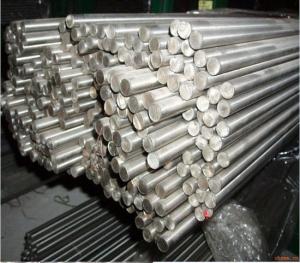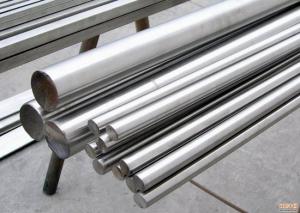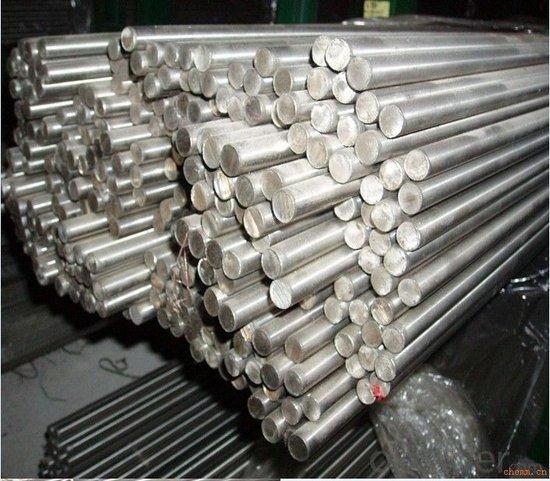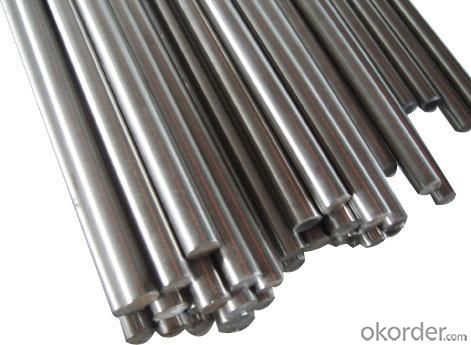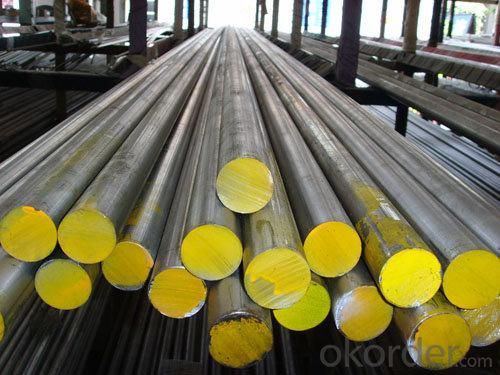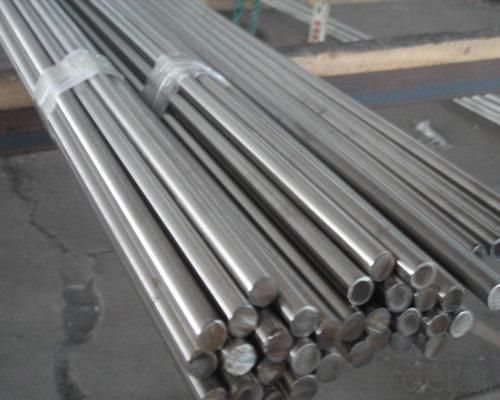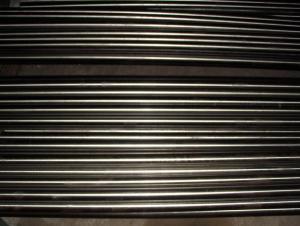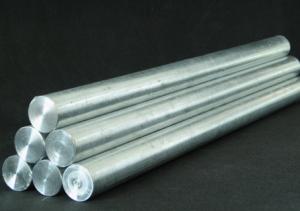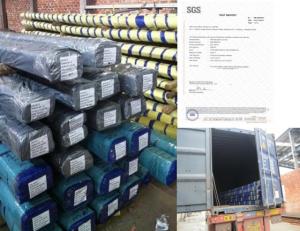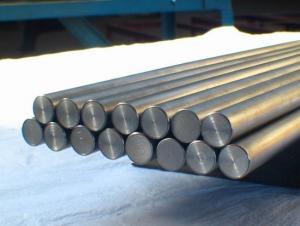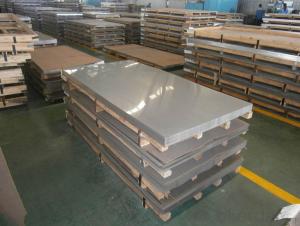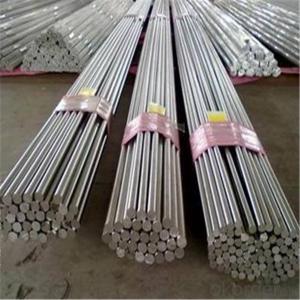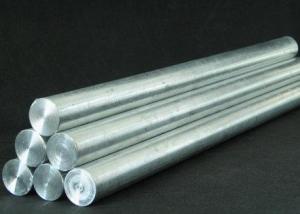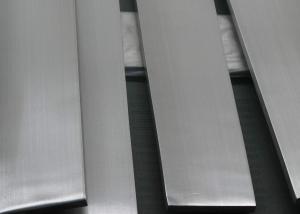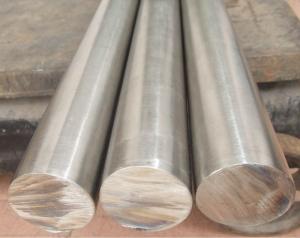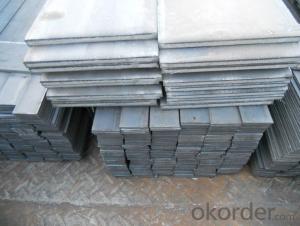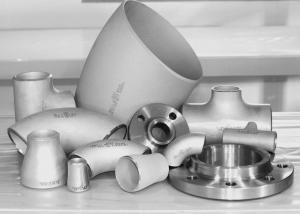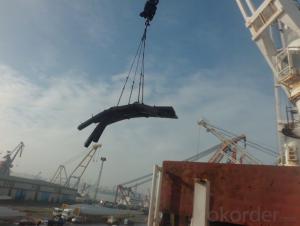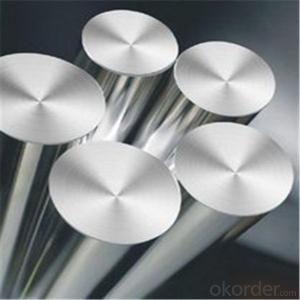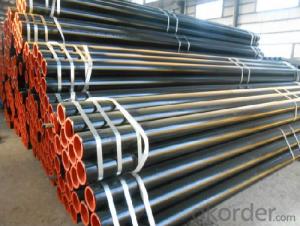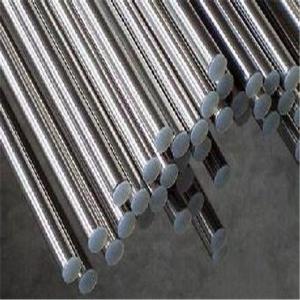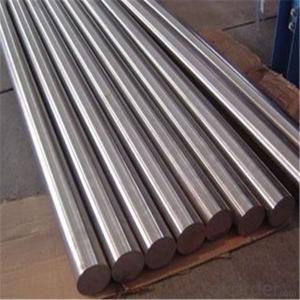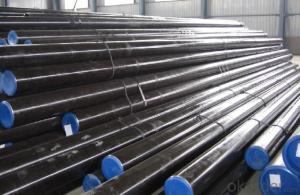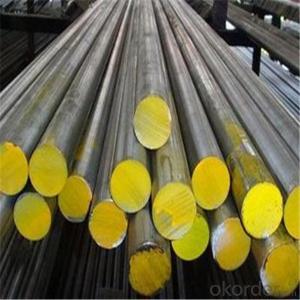Stainless Steel Bar Bright
- Loading Port:
- Tianjin Port
- Payment Terms:
- TT or LC
- Min Order Qty:
- 1 Ton m.t.
- Supply Capability:
- 1000 Tons Per Month m.t./month
OKorder Service Pledge
OKorder Financial Service
You Might Also Like
Introduction of Stainless Steel Bar Bright:
Stainless steel is a production which not easy rust,acid resistance and corrosion resistance, so it is widely used in light industry, heavy industry, daily necessities and the decoration industry.my company long-term supply stainless steel porducts including: stainless steel sheet, stainless steel coil and stainless steel tube.
Details of Stainless Steel Bar Bright(Cold Drawing Polished):
*DIA 10mm to 130mm
*FORGE
*DIA 130mm to 300mm
*GB1220,ASTM A 484/484M, EN 10060/ DIN 1013
*DIA 3mm to 60mm
Main operation | Main steel grade | Available size(mm) | Monthly capacity(mt) | Length(mm) | |
OEM | Stainless steel | 40~500 | 1500 | 4000~8000 | |
Hot | 303 303Cu 304/L 310S 316/L 321 416 420 | 12 ~200 | 3000 | 4000~7000 | |
17-4PH WLA510 | 19~110 | 2000 | 4000~7000 | ||
ST Bar | 321 304/L 316/L 310S 17-4PH WLA510 | 19~110 | 2000 | 4000~7000 | |
CD Bar | Round bar | 303 303CU 304/L 316/L 416 420 17-4PH WLA510 | 4.76~100 | 500 | 2500~6500 |
Square bar | 303 303CU 304/L 316/L 416 17-4PH WLA510 | 4.76~75 | 180 | 2500~6500 | |
Hex bar | 303 303CU 304/L 316/L 416 17-4PH WLA510 | 4.76~75 | 180 | 2500~6500 | |
CG Bar | 303 303CU 304/L 316/L 416 420 17-4PH WLA510 | 4.76~100 | 500 | 2500~6500 | |
Features of Stainless Steel Bar Bright:
*Low density
*High specific strength
*High corrosion resistance
*Good thermal stability and plasticity
*It is widely applied for petroleum, chemical, mechanical and electrical, hardware, etc.
Quality assurance of Stainless Steel Bar Bright:
All of the products are detected by ultrasound making sure that no defects inside the products. Besides, chemical composition, mechanical properties and high-powered organization are also strictly controlled, ensuring our clients get the best products.

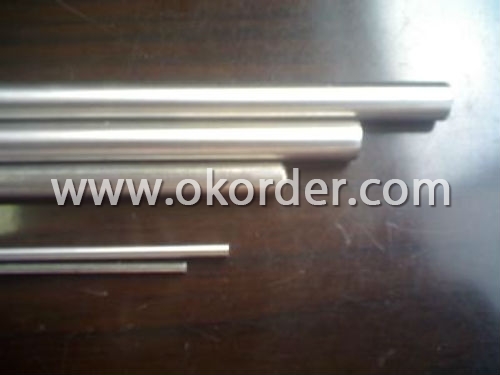
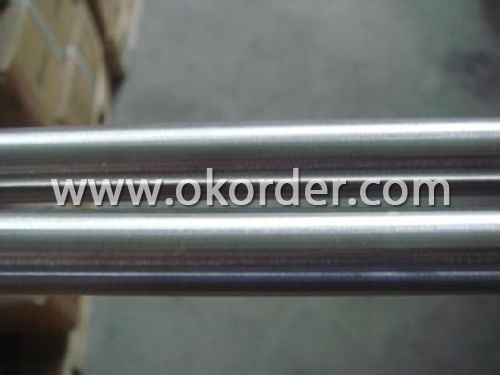
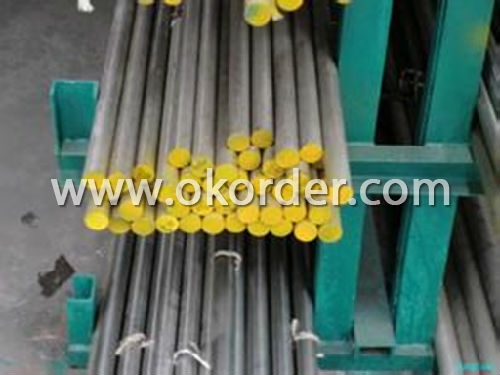
- Q: Are stainless steel bars suitable for pharmaceutical applications?
- Yes, stainless steel bars are suitable for pharmaceutical applications. Stainless steel is a popular choice in the pharmaceutical industry due to its excellent corrosion resistance, durability, and hygienic properties. These bars are often used in the construction of equipment such as tanks, vessels, and pipework that come into contact with pharmaceutical products. Stainless steel bars are easy to clean, maintain, and sterilize, making them ideal for use in environments with stringent cleanliness requirements. Additionally, stainless steel is non-reactive and does not alter the chemical composition of pharmaceutical products, ensuring product integrity and safety. Overall, stainless steel bars are a reliable and practical choice for pharmaceutical applications.
- Q: What are the different cutting techniques for stainless steel bars?
- There are several cutting techniques commonly used for stainless steel bars, depending on the specific requirements and desired outcome. Some of the different cutting techniques for stainless steel bars include: 1. Shearing: This is a common technique used for cutting stainless steel bars. It involves using a straight-edge blade to apply a downward force, cutting through the material. Shearing is suitable for cutting thin stainless steel bars and provides a clean and straight cut. 2. Sawing: Sawing involves using a specialized saw blade to cut through the stainless steel bar. It is a versatile technique that can be used for various thicknesses and sizes of bars. Depending on the application, different types of saws such as bandsaws, circular saws, or reciprocating saws can be used. 3. Abrasive cutting: Also known as grinding or cutting off, abrasive cutting utilizes abrasive wheels or disks to remove material from the stainless steel bar. This technique is often used for cutting thick bars or for precision cutting, as it allows for greater control over the cutting process. 4. Laser cutting: Laser cutting is a high-precision cutting technique that uses a focused laser beam to melt or vaporize the stainless steel bar along a predetermined cutting line. This method provides clean and precise cuts with minimal heat-affected zones and is often used for intricate or complex cutting patterns. 5. Waterjet cutting: Waterjet cutting involves using a high-pressure stream of water mixed with an abrasive substance to cut through the stainless steel bar. The high velocity of the waterjet combined with the abrasive material allows for precise and intricate cuts without heat distortion or mechanical stress. 6. Plasma cutting: Plasma cutting utilizes a high-temperature plasma arc to melt through the stainless steel bar. This technique is suitable for cutting thick bars quickly and accurately, and it can be used for both straight cuts and curved shapes. It is important to consider factors such as the thickness and size of the stainless steel bar, the desired level of precision, and the available equipment when choosing the appropriate cutting technique. Consulting with professionals or experts in metal fabrication can provide valuable guidance in selecting the most suitable cutting method for specific project requirements.
- Q: Do stainless steel bars have good formability?
- Yes, stainless steel bars generally have good formability due to their inherent ductility and high strength. They can be easily shaped, bent, and fabricated into various forms without compromising their structural integrity.
- Q: What is the difference between stainless steel bars and stainless steel wire?
- Stainless steel bars and stainless steel wire are both versatile and commonly used materials in various industries. However, there are some key differences between the two. Firstly, stainless steel bars are solid, cylindrical shapes of stainless steel, typically available in various lengths and diameters. They are often used in construction, manufacturing, and structural applications where strength and durability are required. Stainless steel bars are commonly used as supports, braces, and reinforcements due to their solid structure. On the other hand, stainless steel wire is a thin, flexible strand of stainless steel that can be easily bent and manipulated. It is commonly used in industries such as jewelry, mesh manufacturing, and electrical applications. Stainless steel wire is often used for its aesthetic appeal and ability to be woven or twisted into different shapes. It is also used in electrical applications due to its high conductivity and resistance to corrosion. Another difference between stainless steel bars and stainless steel wire is their manufacturing process. Stainless steel bars are typically produced by melting and casting stainless steel into solid forms, which are then machined or hot rolled to achieve the desired shape and dimensions. Stainless steel wire, on the other hand, is produced by drawing or extruding stainless steel through a series of dies to reduce its diameter and increase its length. In terms of strength and load-bearing capabilities, stainless steel bars are generally stronger and able to support heavier loads compared to stainless steel wire. This is because the solid structure of bars provides more stability and resistance to bending or deformation. Stainless steel wire, although not as strong as bars, offers flexibility and versatility, making it suitable for applications where malleability is required. In summary, the main difference between stainless steel bars and stainless steel wire lies in their shape, manufacturing process, and strength. Stainless steel bars are solid, cylindrical structures used for structural applications, while stainless steel wire is a thin, flexible strand used for various purposes such as jewelry-making and electrical applications. Understanding these differences is crucial in selecting the most appropriate material for specific projects or applications.
- Q: Are stainless steel bars suitable for food storage applications?
- Stainless steel bars are well-suited for storing food. In the food industry, stainless steel is a popular option because it has hygienic properties and is resistant to corrosion. It doesn't interact with food or change its taste, so it's safe to store a variety of food products. Stainless steel bars are also easy to clean, maintain, and sanitize, ensuring the highest level of food safety. Additionally, they are strong and durable, able to withstand the demands of a commercial food storage setting. Overall, stainless steel bars are an excellent choice for food storage because they are clean, durable, and maintain the quality and safety of stored food.
- Q: Are stainless steel bars suitable for power generation plants?
- Yes, stainless steel bars are suitable for power generation plants. Stainless steel is highly resistant to corrosion, making it an ideal material for use in power plants where there is exposure to various chemicals, high temperatures, and moisture. Stainless steel bars provide excellent strength and durability, allowing them to withstand the demanding conditions present in power generation plants. Additionally, stainless steel's hygienic properties make it suitable for use in plants that generate electricity for consumption. Overall, stainless steel bars are a reliable and long-lasting choice for power generation plants.
- Q: Can stainless steel bars be used in the construction repair industry?
- Yes, stainless steel bars can be used in the construction repair industry. Stainless steel bars are known for their durability, strength, and corrosion resistance, making them suitable for various applications in construction repair. They can be used in reinforcement of concrete structures, as support in masonry walls, or as structural components in repairing bridges, buildings, or other infrastructure. Additionally, stainless steel bars are highly resistant to rust and corrosion, ensuring longevity and reducing maintenance costs in the long run.
- Q: Can stainless steel bars be used in chemical plant applications?
- Yes, stainless steel bars can be used in chemical plant applications. Stainless steel is highly resistant to corrosion and chemical reactions, making it a suitable material for handling various chemicals in a chemical plant environment. Its durability, strength, and ability to withstand high temperatures also make it a preferred choice for many applications within the chemical industry.
- Q: What are the advantages of using stainless steel round bars?
- There are several advantages of using stainless steel round bars. Firstly, stainless steel is highly resistant to corrosion and rust, making it suitable for a wide range of applications in various industries. It can withstand exposure to moisture, chemicals, and extreme temperatures without deteriorating, ensuring durability and longevity. Secondly, stainless steel round bars have excellent strength and toughness. They are known for their high tensile strength, which allows them to withstand heavy loads and pressures. This makes them ideal for applications that require structural stability and support. Another advantage of stainless steel round bars is their aesthetic appeal. They have a sleek and polished finish that adds a touch of elegance to any project. Their shiny surface also makes them resistant to stains, making maintenance and cleaning easier. Furthermore, stainless steel round bars are versatile and can be easily fabricated into different shapes and sizes. They can be machined, welded, and formed to meet specific requirements, making them suitable for a wide range of applications such as construction, manufacturing, automotive, and aerospace industries. In addition, stainless steel is known for its hygienic properties. It is resistant to bacteria and other pathogens, making it a popular choice for applications in the food and beverage industry, healthcare facilities, and pharmaceutical industry. Lastly, stainless steel is an environmentally friendly material. It is 100% recyclable, meaning it can be reused without losing its properties. This makes stainless steel round bars a sustainable option, contributing to a greener and more sustainable future. Overall, the advantages of using stainless steel round bars include corrosion resistance, strength and toughness, aesthetic appeal, versatility, hygienic properties, and environmental sustainability. These benefits make stainless steel round bars a popular choice in various industries and applications.
- Q: What are the different types of stainless steel bars available?
- There are several types of stainless steel bars available, including round bars, square bars, hexagonal bars, and flat bars. Each type has its own unique shape and properties, making them suitable for various applications.
Send your message to us
Stainless Steel Bar Bright
- Loading Port:
- Tianjin Port
- Payment Terms:
- TT or LC
- Min Order Qty:
- 1 Ton m.t.
- Supply Capability:
- 1000 Tons Per Month m.t./month
OKorder Service Pledge
OKorder Financial Service
Similar products
Hot products
Hot Searches
Related keywords
